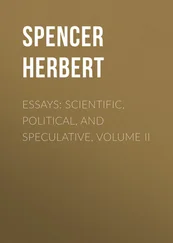On the other hand, what follows if the truth of the assumption be granted? The arguments used to justify this assumption in the case of the stars, equally justify it in the case of the nebulæ. It cannot be contended that, on the average, the apparent sizes of the stars indicate their distances, without its being admitted that, on the average, the apparent sizes of the nebulæ indicate their distances—that, generally speaking, the larger are the nearer and the smaller are the more distant. Mark, now, the necessary inference respecting their resolvability. The largest or nearest nebulæ will be most easily resolved into stars; the successively smaller will be successively more difficult of resolution; and the irresolvable ones will be the smallest ones. This, however, is exactly the reverse of the fact. The largest nebulæ are either wholly irresolvable, or but partially resolvable under the highest telescopic powers; while large numbers of quite small nebulæ are easily resolved by far less powerful telescopes. An instrument through which the great nebula in Andromeda, two and a half degrees long and one degree broad, appears merely as a diffused light, decomposes a nebula of fifteen minutes diameter into twenty thousand starry points. At the same time that the individual stars of a nebula eight minutes in diameter are so clearly seen as to allow of their number being estimated, a nebula covering an area five hundred times as great shows no stars at all! What possible explanation of this can be given on the current hypothesis?
Yet a further difficulty remains—one which is, perhaps, still more obviously fatal than the foregoing. This difficulty is presented by the phenomena of the Magellanic clouds. Describing the larger of these, Sir John Herschel says:—
"The Nubecula Major, like the Minor, consists partly of large tracts and ill-defined patches of irresolvable nebula, and of nebulosity in every stage of resolution, up to perfectly resolved stars like the Milky Way, as also of regular and irregular nebulæ properly so called, of globular clusters in every stage of resolvability, and of clustering groups sufficiently insulated and condensed to come under the designation of 'clusters of stars.'"— Cape Observations , p. 146.
In his Outlines of Astronomy , Sir John Herschel, after repeating this description in other words, goes on to remark that—
"This combination of characters, rightly considered, is in a high degree instructive, affording an insight into the probable comparative distance of stars and nebulæ , and the real brightness of individual stars as compared with one another. Taking the apparent semidiameter of the nubecula major at three degrees, and regarding its solid form as, roughly speaking, spherical, its nearest and most remote parts differ in their distance from us by a little more than a tenth part of our distance from its center. The brightness of objects situated in its nearer portions, therefore, cannot be much exaggerated, nor that of its remoter much enfeebled, by their difference of distance; yet within this globular space, we have collected upwards of six hundred stars of the seventh, eighth, ninth, and tenth magnitudes, nearly three hundred nebulæ, and globular and other clusters, of all degrees of resolvability , and smaller scattered stars innumerable of every inferior magnitude, from the tenth to such as by their multitude and minuteness constitute irresolvable nebulosity, extending over tracts of many square degrees. Were there but one such object, it might be maintained without utter improbability that its apparent sphericity is only an effect of foreshortening, and that in reality a much greater proportional difference of distance between its nearer and more remote parts exists. But such an adjustment, improbable enough in one case, must be rejected as too much so for fair argument in two. It must, therefore, be taken as a demonstrated fact, that stars of the seventh or eighth magnitude and irresolvable nebula may co-exist within limits of distance not differing in proportion more than as nine to ten."— Outlines of Astronomy (10th Ed.), pp. 656–57.
This supplies yet another reductio ad absurdum of the doctrine we are combating. It gives us the choice of two incredibilities. If we are to believe that one of these included nebulæ is so remote that its hundred thousand stars look like a milky spot, invisible to the naked eye; we must also believe that there are single stars so enormous that though removed to this same distance they remain visible. If we accept the other alternative, and say that many nebulæ are no further off than our own stars of the eighth magnitude; then it is requisite to say that at a distance not greater than that at which a single star is still faintly visible to the naked eye, there may exist a group of a hundred thousand stars which is invisible to the naked eye. Neither of these suppositions can be entertained. What, then, is the conclusion that remains? This only:—that the nebulæ are not further from us than parts of our own sidereal system, of which they must be considered members; and that when they are resolvable into discrete masses, these masses cannot be considered as stars in anything like the ordinary sense of that word. [12]
And now, having seen the untenability of this idea, rashly espoused by sundry astronomers, that the nebulæ are extremely remote galaxies; let us consider whether the various appearances they present are not reconcilable with the Nebular Hypothesis.
Given a rare and widely-diffused mass of nebulous matter, having a diameter, say, of one hundred times that of the Solar System, [13]what are the successive changes that may be expected to take place in it? Mutual gravitation will approximate its atoms or its molecules; but their approximation will be opposed by that atomic motion the resultant of which we recognize as repulsion, and the overcoming of which implies the evolution of heat. As fast as this heat partially escapes by radiation, further approximation will take place, attended by further evolution of heat, and so on continuously: the processes not occurring separately as here described, but simultaneously, uninterruptedly, and with increasing activity. When the nebulous mass has reached a particular stage of condensation—when its internally-situated atoms have approached to within certain distances, have generated a certain amount of heat, and are subject to a certain mutual pressure, combinations may be anticipated. Whether the molecules produced be of kinds such as we know, which is possible, or whether they be of kinds simpler than any we know, which is more probable, matters not to the argument. It suffices that molecular unions, either between atoms of the same kind or between atoms of different kinds, will finally take place. When they do take place, they will be accompanied by a sudden and great disengagement of heat; and until this excess of heat has escaped, the newly-formed molecules will remain uniformly diffused, or, as it were, dissolved in the pre-existing nebulous medium.
But now what may be expected by and by to happen? When radiation has adequately lowered the temperature, these molecules will precipitate; and, having precipitated, they will not remain uniformly diffused, but will aggregate into flocculi; just as water, precipitated from air, collects into clouds. Concluding, thus, that a nebulous mass will, in course of time, resolve itself into flocculi of precipitated denser matter, floating in the rarer medium from which they were precipitated, let us inquire what are the mechanical results to be inferred. Of clustered bodies in empty space, each will move along a line which is the resultant of the tractive forces exercised by all the rest, modified from moment to moment by the acquired motion; and the aggregation of such clustered bodies, if it eventually results at all, can result only from collision, dissipation, and the formation of a resisting medium. But with clustered bodies already immersed in a resisting medium, and especially if such bodies are of small densities, such as those we are considering, the process of concentration will begin forthwith: two factors conspiring to produce it. The flocculi described, irregular in their shapes and presenting, as they must in nearly all cases, unsymmetrical faces to their lines of motion, will be deflected from those courses which mutual gravitation, if uninterfered with, would produce among them; and this will militate against that balancing of movements which permanence of the cluster pre-supposes. If it be said, as it may truly be said, that this is too trifling a cause of derangement to produce much effect, then there comes the more important cause with which it co-operates. The medium from which the flocculi have been precipitated, and through which they are moving, must, by gravitation, be rendered denser in its central parts than in its peripheral parts. Hence the flocculi, none of them moving in straight lines to the common centre of gravity, but having courses made to diverge to one or other side of it (in small degrees by the cause just assigned, and in much greater degrees by the tractive forces of other flocculi) will, in moving towards the central region, meet with greater resistances on their inner sides than on their outer sides; and will be thus made to diverge outwardly from their courses more than they would otherwise do. Hence a tendency which, apart from other tendencies, will cause them severally to go on one or other side of the centre of gravity, and, approaching it, to get motions more and more tangential. Observe, however, that their respective motions will be deflected, not towards one side of the common centre of gravity, but towards various sides. How then can there result a movement common to them all? Very simply. Each flocculus, in describing its course, must give motion to the medium through which it is moving. But the probabilities are infinity to one against all the respective motions thus impressed on this medium, exactly balancing one another. And if they do not balance one another the result must be rotation of the whole mass of the medium in one direction. But preponderating momentum in one direction, having caused rotation of the medium in that direction, the rotating medium must in its turn gradually arrest such flocculi as are moving in opposition, and impress its own motion upon them; and thus there will ultimately be formed a rotating medium with suspended flocculi partaking of its motion, while they move in converging spirals towards the common centre of gravity. [14]
Читать дальше












